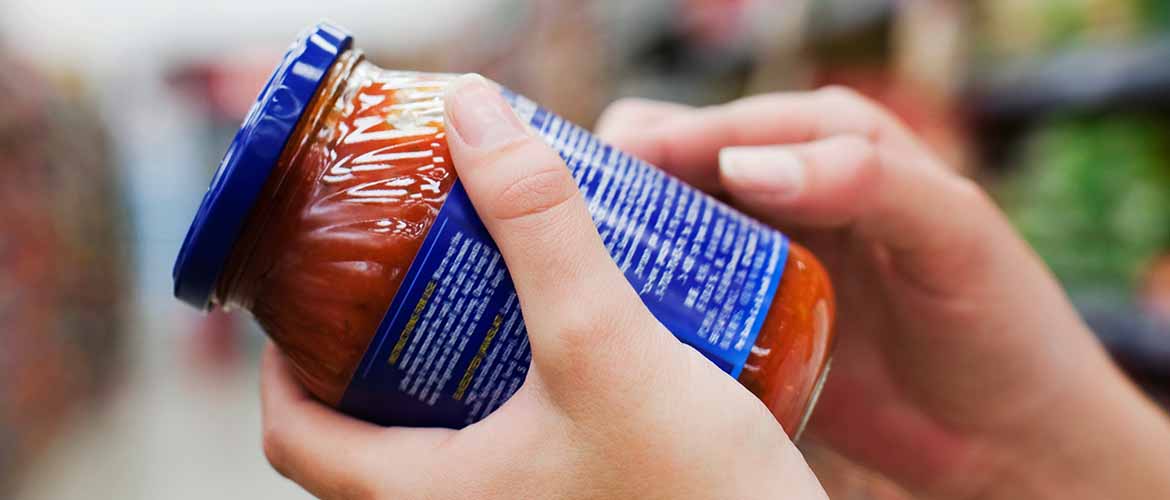March 20, 2024
When you think of sugar, you probably think of sweet candy, cold ice cream, or a warm donut. You probably don’t think of foods like granola, yogurt, or your favorite dipping condiments like ketchup and barbeque sauce. Added sugars are in more foods than you may even realize. But does your body need sugar? And if so, how much is too much? Let’s find out.
Sugar and Your Body: Why You Need It
Believe it or not, not all sugar is bad. In fact, glucose, a type of sugar, plays a really important role in the body – it gives your body the energy it needs to work properly. When we eat, carbohydrates from food break down in the body into glucose. Glucose is then absorbed and released into the blood stream, where it is stored or immediately used for energy.
But that doesn't mean we should go around inhaling every cupcake we find in the breakroom. Remember that there are two forms of sugar – simple sugar and processed sugar. You'll find simple sugar in foods like beans, veggies, and fruits. Simple sugars found in whole foods also provide the body with other nutrients it needs, like vitamins, proteins, and minerals. While you and your body definitely need energy to function, too much sugar can cause more harm than good.
Bittersweet Health Effects
By now, you may have heard that sugar, especially added-sugars, has the potential to affect your health in some not-so-sweet ways. From a pesky cavity to something more bothersome, here are some ways that sugar can impact your health.
- Weight Gain: Across the world, obesity rates are rising and added sugars may be to blame. According to Harvard University, the increased consumption of sugary drinks is a large contributor to the obesity epidemic.1 Why is that? When you consume sugary drinks, your body may not feel as full as if you had eaten the same amount of calories in solid food. For example, a regular 12-ounce can of cola contains roughly 39 grams of sugar – which is just over 9 teaspoons of sugar.2 Are you imagining measuring teaspoons of sugar in a glass right now? If you drink multiple cans of soft drinks each day, you’re racking up these empty calories.
- Heart Disease: When it comes to the correlation between sugar and heart disease, some of the risks can be attributed to a trickle-down effect from obesity. However, obesity is just one of the risk factors of heart disease. Others include elevated blood sugar and blood pressure levels. Did you know? A study by the University of Leicester found that elevated sugar levels in blood can cause the blood vessels to contract more strongly than normal. Your blood pressure is controlled by blood vessels contracting and relaxing, and if sugar is causing your blood vessels to contract more, your blood pressure will be higher.3 In another article by the JAMA Internal Medicine Journal, evidence found that there is a significant relationship between consuming added sugar and an increase in cardiovascular disease.4
- Diabetes: Diabetes is a disease that prevents the body from maintaining healthy blood sugar levels. Blood glucose, the fancy name for blood sugar, is the main source of energy for your body and it comes from the foods we eat. Insulin, a hormone made by our pancreas, helps your body process the glucose found in your food for your cells, which is then used as energy. Sometimes, your body may not make enough, or any, insulin, causing the glucose in your body to stay in your blood.5 This is known as high blood sugar. There are a few different types of diabetes. Type 1 diabetes can be caused by genetics and other factors that can trigger the onset of the disease. Symptoms of type 1 diabetes can come on quickly, sometimes in a matter of weeks. Type 2 diabetes, which is the most common form of diabetes, is caused by genetics and lifestyle factors, like obesity and physical inactivity. Type 2 diabetes typically develops gradually over the course of a few years, and often begins with insulin resistance. According to a study by the Mayo Clinic Proceedings, added sugar can be linked to a decline in glucose tolerance and can cause increased fat storage, both of which negatively impact the risk of diabetes.6
How Much Is Too Much?
Remember those two kinds of sugar we talked about before? As a refresher, naturally occurring sugars are just what they sound like –sugars that are found naturally in whole foods like fruits, vegetables, and dairy products. Processed sugars, or added sugars, on the other hand, are sugars that are added to foods when they are prepared and processed, like baked goods, sports drinks, and candy.
Did you know? The average American is consuming nearly 66 pounds of added sugar every year, according to the University of California San Francisco.7 While whole foods do contain naturally occurring sugars, these sugars aren’t as concerning as artificial sweeteners because they don’t impact your body the same way. This is because natural sugars are processed by your liver, and added sugars are processed by your pancreas. The pancreas is the organ that produces insulin, which is the hormone that helps to regulate blood glucose levels.
The American Heart Association recommends limiting the amount of added sugars consumed per day to 100 calories or 6 teaspoons for women, and 150 calories or 9 teaspoons per day for men. If you’re looking at nutrition labels, remember that each gram of sugar has 4 calories. So for women, that amounts to a maximum of 25 grams of sugar a day and just over 37 grams a day for men.8
How Can You Make Smarter Sugar Choices?
Don’t let all of this sweet talk keep you up at night! With a few small tweaks, you’ll be on your way to a new lifestyle that isn’t any less sweet.
- Don’t Drink Your Calories: Like we mentioned before, empty calories from sugary drinks aren’t doing your health any favors. According to the Dietary Guidelines for 2015-2020, 47 percent of our added sugar sources come from beverages that aren’t milk or 100 percent fruit juice. Transition to drinking more water, unsweetened teas, and try to wean yourself off of sugar-laden coffee drinks. It may take some time to adjust, but a bold roast and some half and half can be just as satisfying!
- Use Sauces Sparingly: Check the nutrition labels of common sauces you use, like pasta sauce, salad dressings, and condiments, such as ketchup. Scan your grocery store shelves for reduced sugar options. We promise, you won’t even notice the missing sweetness.
- Eat More Whole Foods: Whenever possible, try to incorporate more whole foods, which are free of added sugars, into your lifestyle and cook more things from scratch. Remember the jarred pasta sauce we just talked about? Try making your own sometime! While it may take a little bit more leg work, you’ll benefit in a big way in the end. The more you eat whole foods rather than processed, your taste buds will start to adjust. Soon enough, you won’t crave the added sweeteners anymore.
- Read Nutrition Labels: When it comes to nutrition labels, awareness is key. Rather than grabbing the first kind of yogurt you see off the shelf, learn to pause and read the labels and compare brands before purchasing. Not only should you look at the grams of sugar in each serving of processed food, but you should review the ingredients list to see if the sugar in each serving is natural or is added sugar. There are so many different names for added sugar, but some of the most common ones are: high fructose corn syrup, maltose, dextrose, and rice syrup.
Originally published September 2018. Updated March 2024.
References:
1 Harvard T.H. Chan School of Public Health: Sugary Drinks and Obesity Fact Sheet. Accessed August 1, 2018.
2 The Coca-Cola Company: How much sugar is in Coca‑Cola? Accessed March 20, 2024.
3 Diabetes News Journal: High Blood-Sugar Levels Seen to Affect How Blood Vessels Contract. Last updated January 20, 2016. Accessed August 15, 2018.
4 JAMA Internal Medicine: Added Sugar Intake and Cardiovascular Disease Mortality Among US Adults. Published April 2014. Accessed August 1, 2018.
5 NIDDK: What Is Diabetes? Last updated November 2016. Accessed August 1, 2018.
6 Mayo Clinic Proceedings: Added Fructose: A Principal Driver of Type 2 Diabetes and Its Consequences. Published March 2015. Accessed August 1, 2018.
7 UCSF: How Much Is Too Much? The Growing Concern Over Too Much Added Sugar In Our Diets. Accessed August 1, 2018.
8 AHA: Added Sugars. Last updated April 17, 2018. Accessed August 1, 2018.



